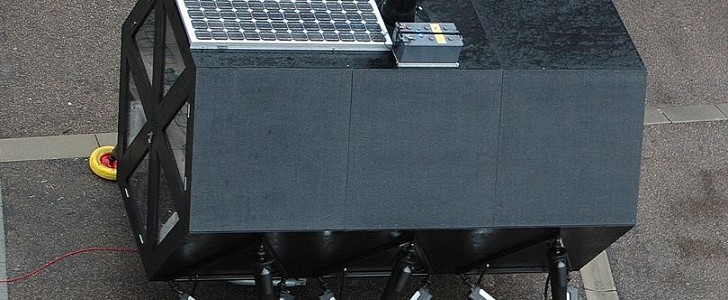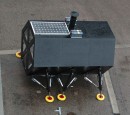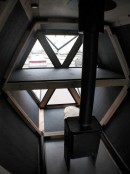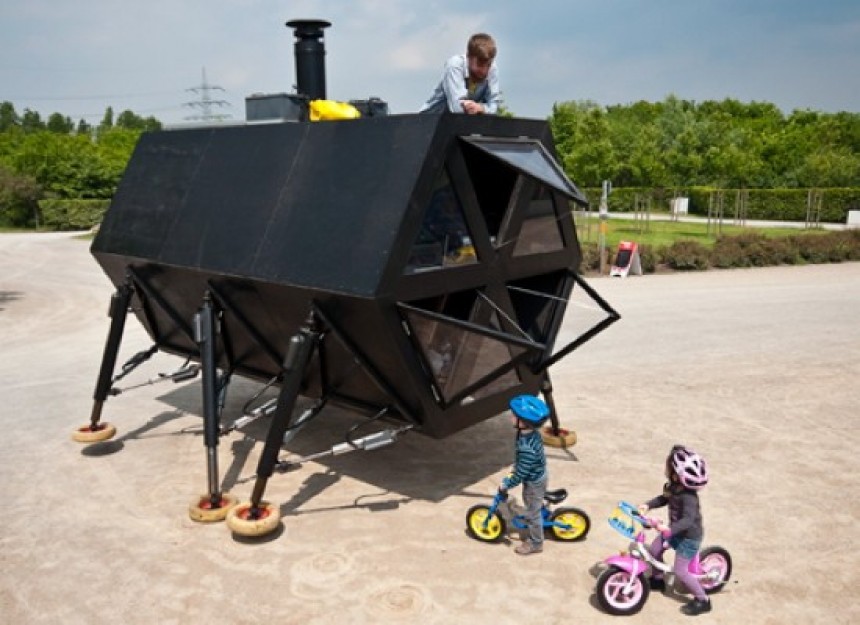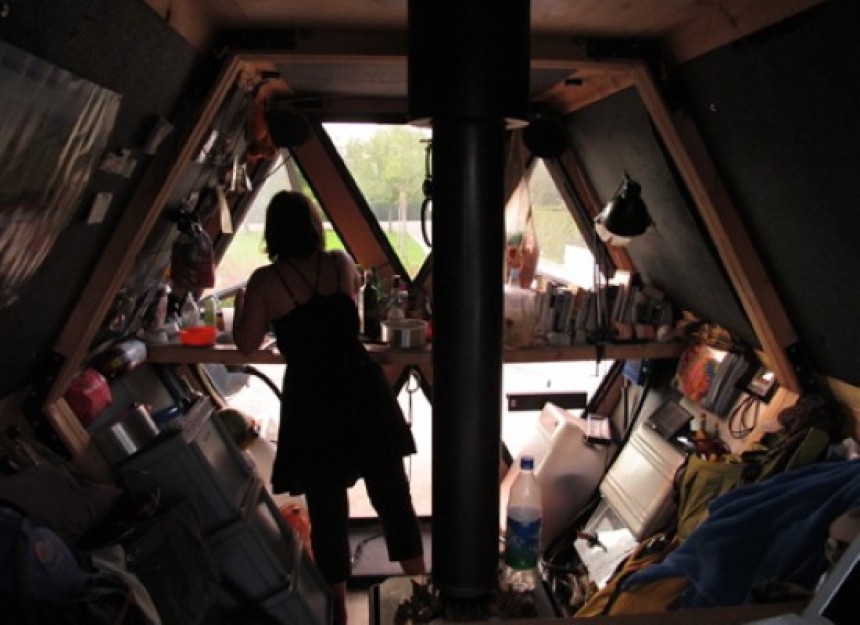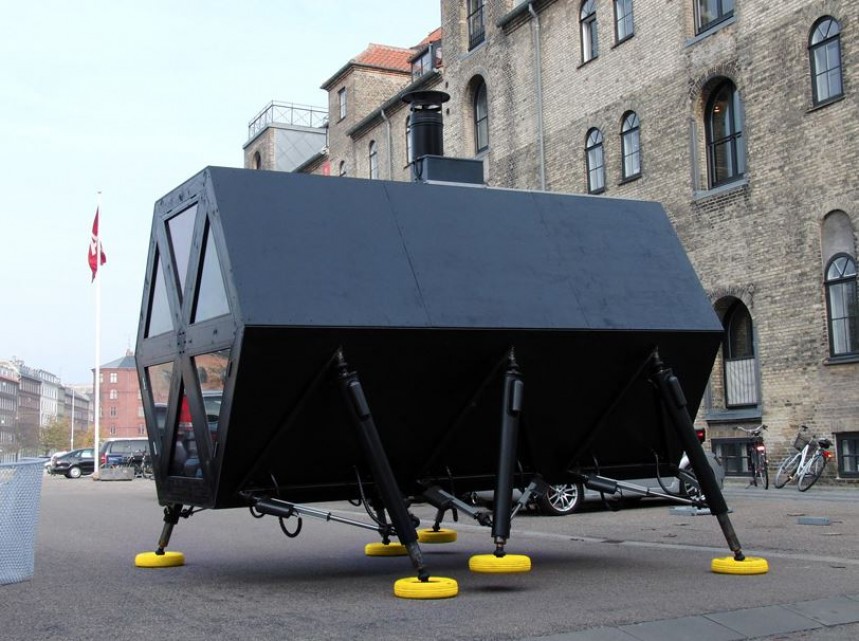They say walking is relaxing, helping you blow off steam, get your thoughts in order, and concentrate, while enjoying the benefits of a mild workout. Walking is also good for your house, as this N55 project proves.
Tiny homes and all manners of mobile pods take up considerable space in the collective imagination: for those who adhere to the nomadic lifestyle, they propose new ways of finding freedom and the perfect recipe for downsizing; for those who don’t, they paint a beautiful picture of a possible future or, at the very least, allow them to indulge in harmless daydreaming for a while.
This N55 project has them all beat, both in terms of features and the sheer dose of idealism it comes packed with. It’s called the Walking House because it’s a house that walks (duh), and it was created by art collective N55 in Copenhagen, Denmark, in 2008. That’s the year when Walking House took its first steps on its six robotic legs. It then went on to travel the country and even went abroad to the UK.
To this day, it remains an awesome, beautiful and impossibly idealistic take on the sustainable future.
Walking House was commissioned by the Wysing Arts Centre in Cambridgeshire, UK, and built by N55, Ion Sørvin, Øivind Alexander Slaatto, and Sam Kronick. It is inspired by the plight of traveler communities (the Romani in the UK) and, as such, its design shares certain similarities with the Romani horse-drawn carriage in that it provides shelter and the basic amenities for an entire family on the move. As a plus, it is modular and can be fit for a variety of purposes, which would pave the way for entire walking communities or villages. Imagine that.
From studying the challenges of traveler communities, N55 came to the conclusion that ownership of the land is not acceptable, because it is neither justified nor equitable. So what, then, if we could have houses that didn’t imply land ownership because they could move freely on any terrain? The answer to that question was a hexagonal pod that sat high on six robotic legs and moved about at man’s walking pace. At least, that was the proposed speed: the Walking House only gets 60 meters (197 feet) an hour, so moving from place to place would be an experience in and of itself.
Walking House is 3.5 meters (11.5 feet) high, 3.72 meters (12.2 feet) long, and 3.5 meters (11.5 feet) wide. It weighs 1,200 kg (2,646 pounds) and consists of a steel frame with wood and aluminum, covered in any material available (insulation can also vary depending on location and availability of resources, from Polyethylene to wool), and polycarbonate windows.
Each leg is an autonomous unit, with its own accumulators and linear actuators, which gives the pod stability on all types of terrain. In motion, the house keeps three legs on the ground at all times, to prevent toppling over, drawing power from the roof-mounted solar panels and mini windmills.
In fact, the entire construction is designed as self-sufficient: you have rainwater collection system, waste management, compost toilet, the works. Because the Walking House is meant to be completely independent from road infrastructure, it’s also independent from other human constructions as well. Add another unit that would serve as greenhouse for your vegetables, and you’d have a duo of walking houses that could provide for and shelter a family of four.
The Walking House sleeps four, though in less than comfortable conditions. You have the sleeping area at one end, with a bunk bed configuration, and the kitchen and bathroom at the other end. The central area can serve as living room or office, and also for storage. Because of the hexagonal shape, you’d have to get creative with organizing everything inside but, then again, you’re living in a walking house. You should expect to make some compromises.
Perhaps the most idealistic part of the project is the assumption that whole communities would hit the road in complex units based on the pod.
“Equipped with specialized modules for various forms of productions like greenhouses, small factories etc. a Walking House or a Walking Village could supply means for the inhabitants to make a living in this way while moving through the Landscapes and cityscapes. As an example a Walking Village could be specialized in foodproduction or special modules for fishfarming, greenhouses and so on could be part of the construction,” N55 said at the time.
That’s an idyllic notion, that we could all pack our belongings and our entire lives and live like nomads, never to put roots down again, at one with nature and never lacking for anything. It probably explains why we haven’t more units of the N55 Walking House around.
This N55 project has them all beat, both in terms of features and the sheer dose of idealism it comes packed with. It’s called the Walking House because it’s a house that walks (duh), and it was created by art collective N55 in Copenhagen, Denmark, in 2008. That’s the year when Walking House took its first steps on its six robotic legs. It then went on to travel the country and even went abroad to the UK.
To this day, it remains an awesome, beautiful and impossibly idealistic take on the sustainable future.
From studying the challenges of traveler communities, N55 came to the conclusion that ownership of the land is not acceptable, because it is neither justified nor equitable. So what, then, if we could have houses that didn’t imply land ownership because they could move freely on any terrain? The answer to that question was a hexagonal pod that sat high on six robotic legs and moved about at man’s walking pace. At least, that was the proposed speed: the Walking House only gets 60 meters (197 feet) an hour, so moving from place to place would be an experience in and of itself.
Walking House is 3.5 meters (11.5 feet) high, 3.72 meters (12.2 feet) long, and 3.5 meters (11.5 feet) wide. It weighs 1,200 kg (2,646 pounds) and consists of a steel frame with wood and aluminum, covered in any material available (insulation can also vary depending on location and availability of resources, from Polyethylene to wool), and polycarbonate windows.
Each leg is an autonomous unit, with its own accumulators and linear actuators, which gives the pod stability on all types of terrain. In motion, the house keeps three legs on the ground at all times, to prevent toppling over, drawing power from the roof-mounted solar panels and mini windmills.
The Walking House sleeps four, though in less than comfortable conditions. You have the sleeping area at one end, with a bunk bed configuration, and the kitchen and bathroom at the other end. The central area can serve as living room or office, and also for storage. Because of the hexagonal shape, you’d have to get creative with organizing everything inside but, then again, you’re living in a walking house. You should expect to make some compromises.
Perhaps the most idealistic part of the project is the assumption that whole communities would hit the road in complex units based on the pod.
That’s an idyllic notion, that we could all pack our belongings and our entire lives and live like nomads, never to put roots down again, at one with nature and never lacking for anything. It probably explains why we haven’t more units of the N55 Walking House around.
